I have successfully made hand pulled noodles (la mian, la mien). It’s taken me about 35 batches of dough and a lot of experimenting. The pulling part requires a bit of technique, but without a proper recipe, it’s possible to have dough that will never reach a point where you can pull it. That’s a bit disappointing.
So the first thing to deal with is a good recipe. I went through 21 different dough recipes. The good news is I found a proper recipe that works really well. The bad news is I’ve done all my recipes by weight. That’s a little scary, but it’s the only way to get a perfect ball of dough every time. If anyone comes across this and wants to try to convert to a volume based recipe, feel free, but i recommend going out and buying a cooking scale. It will save a lot of time if you’re planning on committing to learning how to pull noodles.
Ingredients for making hand pulled noodles are relatively simple. You need flour, water, some oil, and a little salt. In addition, you can add some lye water, which I’ll talk about at the end.
Flour
Flour is probably the most troublesome of the ingredients because you have to get your gluten levels just right. The gluten is what makes the dough stretchy. In my experience, too much gluten will result in a dough that will never reach the right texture for pulling. It will tear very early. A proper amount of gluten will result in dough that stretches into hair thin noodles.
I started out working with some flour I found at an asian market near my home (it’s called Marina Food and it’s in Cupertino, CA). Unfortunately, it seems this flour isn’t readily available everywhere, and it seems to be sold out at Marina pretty often. For the record though, here’s what it looks like: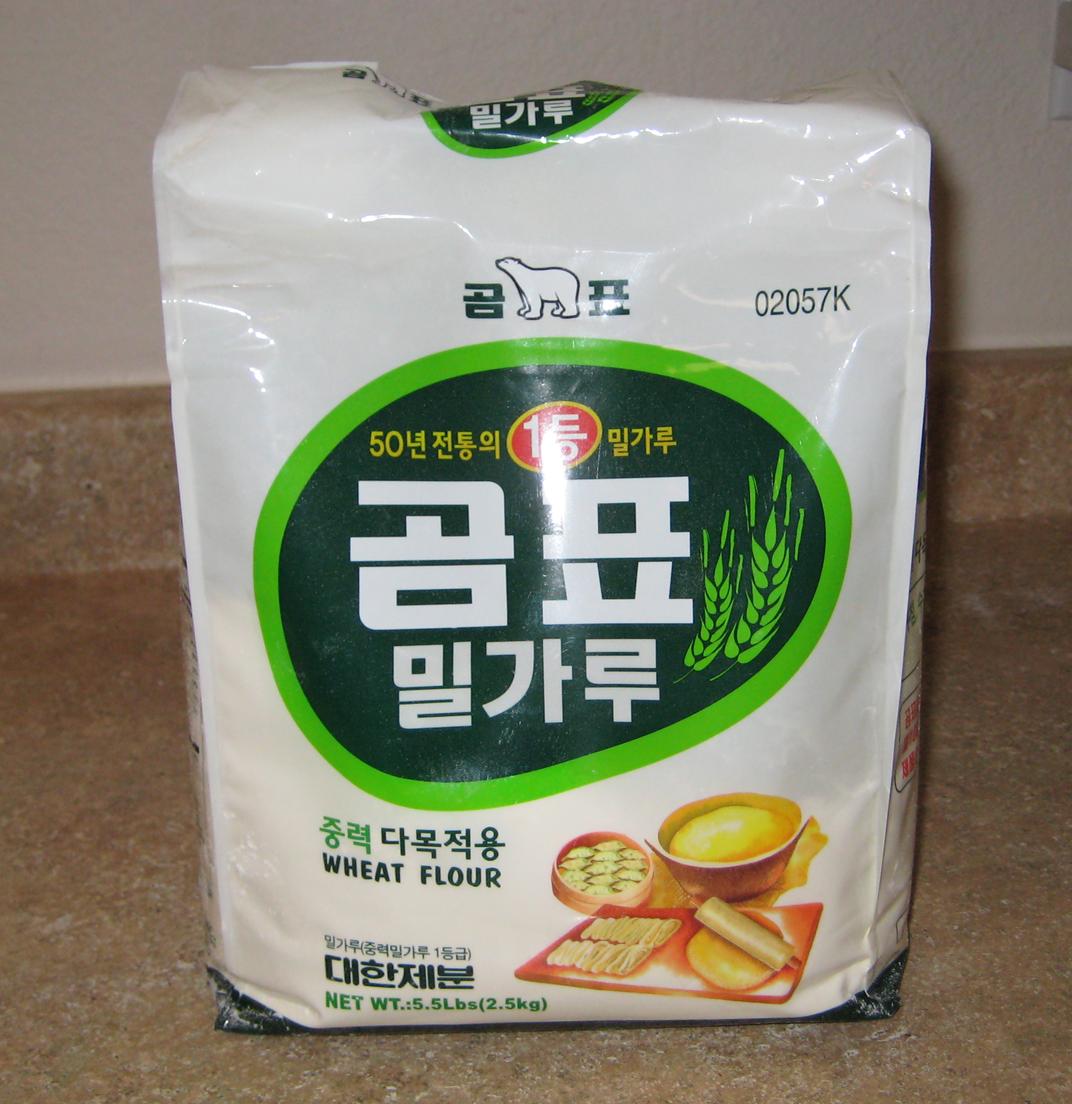
and the nutrition information:
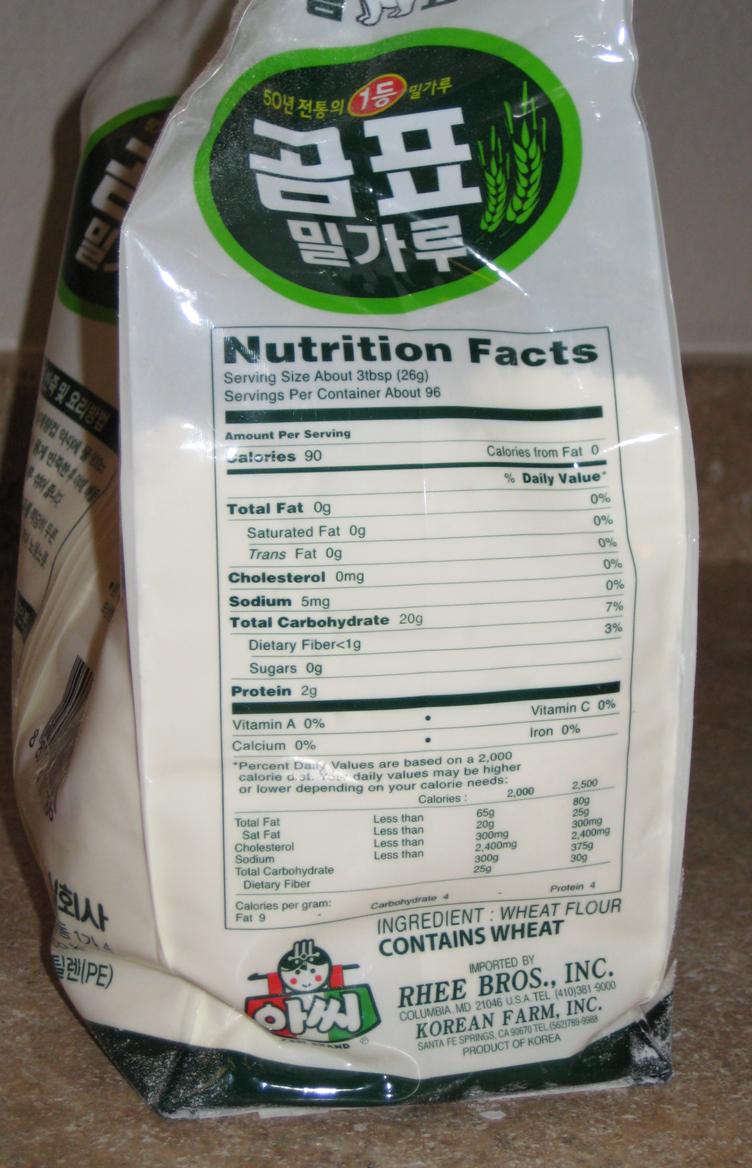 This Korean flour seems to have just the amount of gluten in it, but a flour mix with more common flours is more useful to people who can’t go to Marina to get this. The solution to getting a proper mixture with normal American flours comes from this recipe. However, in my searching, I have been unable to find proper “Pastry” flour, but I’ve been successful with cake flour. For my recipe, I used Softasilk cake flour and Gold Medal All-Purpose flour. These were available at my local Safeway, and you can see them in the image above. Here’s the nutrition information just in case you need it:
This Korean flour seems to have just the amount of gluten in it, but a flour mix with more common flours is more useful to people who can’t go to Marina to get this. The solution to getting a proper mixture with normal American flours comes from this recipe. However, in my searching, I have been unable to find proper “Pastry” flour, but I’ve been successful with cake flour. For my recipe, I used Softasilk cake flour and Gold Medal All-Purpose flour. These were available at my local Safeway, and you can see them in the image above. Here’s the nutrition information just in case you need it:
for the Softasilk: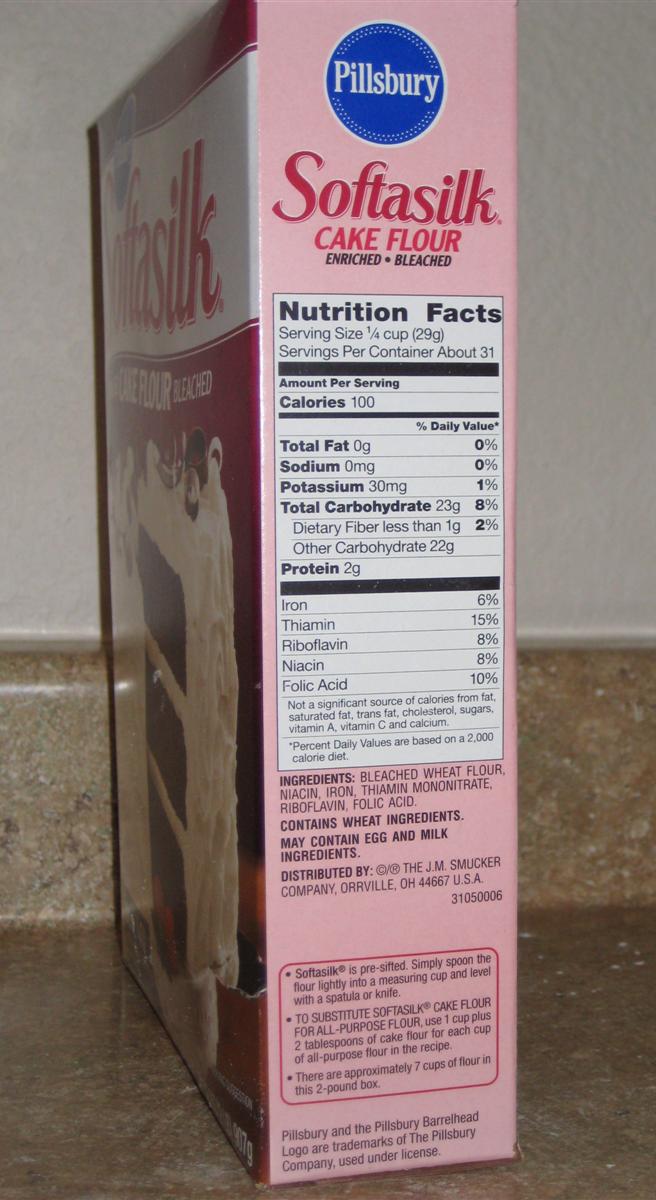 And for the Gold Medal:
And for the Gold Medal: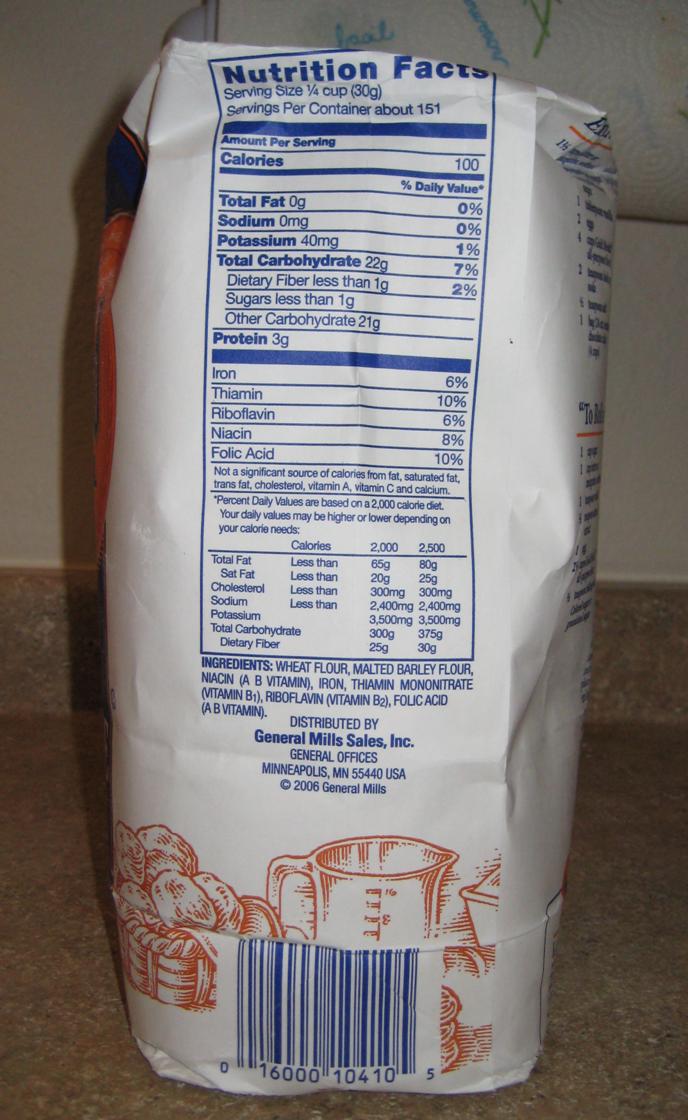
Now if you can find it, I had really good luck with the Korean flour, but the cake / all-purpose works really well too. If you do go with the Korean flour, just use it as 100% of your flour. The recipe I post will be for the cake / all-purpose mix. Regardless of what you choose to use, your recipe should contain about 59% flour.
Water
Water is pretty simple. Water from the tap is just fine. I generally tried to use warm water, as the dough is much easier to work with when it’s warm. In my recipes, I use about 31% water.
Oil
The purpose of sesame oil in the recipe is for a couple things. The first is flavor. The second, more importantly, is that it gives the dough a bit more springiness when you’re trying to stretch it. It’s almost like liquid rubberband. Thirdly, it helps keep the dough from sticking to your hands. This means we can make a wetter dough recipe and still knead it easily. I’ve tried recipes with no sesame oil, recipe with a little, and recipes with a lot. I’ve had the most success with recipes that have 8-9% sesame oil.
You can use any type of sesame oil. I tried a recipe with a sesame /soy oil that did not work well, so i recommend using 100% sesame oil. The green bottle that’s generally available in the ethnic section of a supermarket is good. I’ve also been successful with random sesame oils from asian markets, too.
Salt
Salt is generally for a little more flavor in the noodles. I did, however, try a recipe with 2% salt, and it made the dough very tough (to a point that i couldn’t pull it). I recommend about .3% salt (which comes out to 1 gram in my recipe).
Lye Water
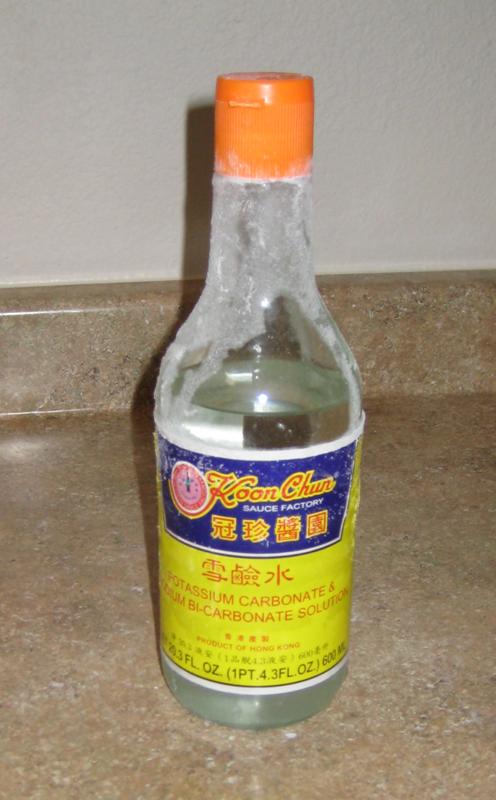
If you read through forums about hand pulled noodles, you’ll read about “lye water” and “kansui powder”. I was unable to find anything called “kansui powder”, but i did find lye water. Most asian markets have it alongside the oil and soy sauce related ingredients.
Lye water is supposed to be the secret ingredient in hand pulled noodles. I’ve tried recipes with it and without it, and it does not make the dough any easier to pull. There’s almost no difference in the dough when using lye water, although if you use too much, you’ll get something a lot like when you add too much salt. The dough will be too tough to pull. I’ve come to a happy ground with about 1% lye water in my dough.
What lye water DOES add is a nice bit of chewiness to the noodles. The flavor is supposed to be slightly different, too, but i haven’t noticed that yet. I’m always just happy that i was able to make some noodles 😀
I’ll post two recipes, one with lye water, and one without. You can be the judge.
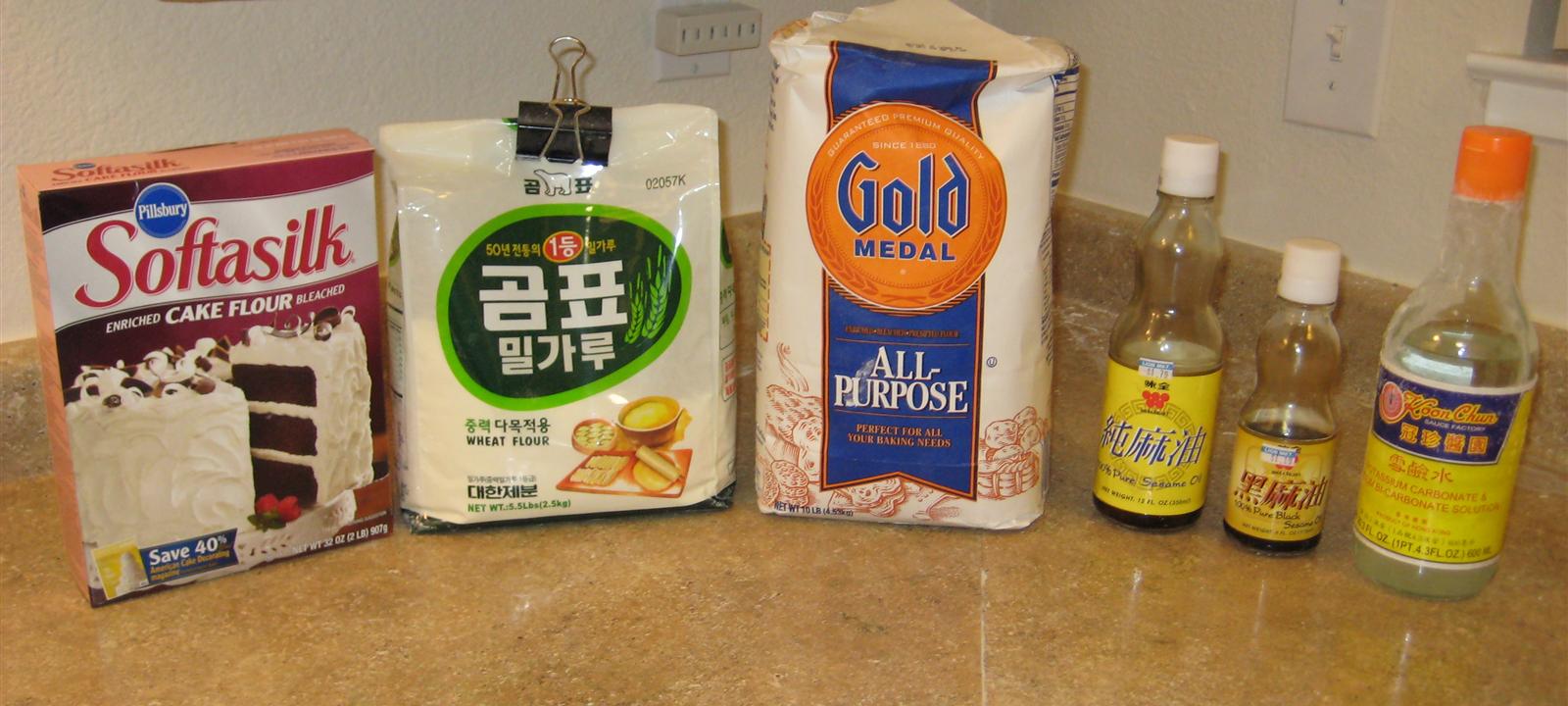
This is fantastic! Thanks so much for posting this on your blog. I, too, have been searching for the perfect technique and recipe. I’m inspired to try again.
Thanks for the Ingredients. I watched your demo video’s Part I and Part II (before throwing the dough to waste basket. Thanks for saving the dough..! hehe) which was quite encouraging.
I did tried to prepare a proper dough but it had no elasticity. I think sesame oil must be playing the main role towards elasticity.
I am still in the process to make hand made noodles. The first batch of trial and failure is complete.
I want to store both the videos on my computer. Please guide me from where I can download (if you permit me to do so)both the videos.
Thanks once again.
@Suresh:
I’ve posted the videos in a zip file at http://www.lukerymarz.com/files/noodlevideos.zip if you’d like to download the videos to your computer. Good luck to you!
Thank you very much for your permission and the download link.
In your first video you showed a good dough and a bad dough. In my first batch of self learning, the dough which I made was a bad dough.
I thought that it must be bad because I used very little water to make it and that’s why it was not having the required elasticity.
Considering the previous experience, yesterday I tried with a small amout of flour( refined wheat flour – you may be knowing “Maida”)
and added the salt, sesam oil, a pinch of baking soda and water. The total elaborations lead to a liquid paste. To make it slight thicker
as shown in your video, I went on adding the flour and kneaded. This cycle went on for 3 hours. and hushhhhhh……! finally I could prepare a
dough with zero elasticity.
I added again the sesam oil in view to bring the elasticity, but it won’t helped. Therefore I took our traditional machine, it’s just like a Cylinder
and a piston with a small mesh. I put the mesh at the bottom of cylinder added the paste in the cylinder, put a piston on it and pressed it and
created “Pressurised Noodles”.
I am mostly concerned about the elasticity of the dough. Can you please help me in this regard..? Alternatively can you please add the video
about preparing a dough step by step. ? It will help me a lot.
Thanks once again for the videos.
Warm regards…
Sincerely,
Suresh
Actually, the ingredients require are only flour, salt and alkaline such as baking soda. The proportion is as follows: for every kg of flour, you need 10g of salt and 5g of alkaline. After initially mixing the dough, you need to stand the dough for about twenty minutes at room temperature before stretching it. Happy noodles making.
Peter H T Seow
I came across your youtube noodle making video today and it is so inspiring ~ Will try it out soon. Thank you for sharing
Pamela